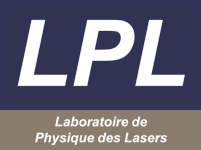Looking for potential variations of the proton-to-electron mass ratio and other tests of fundamental physics
Post: Master internship in Experimental Molecular Physics
Location: Laboratoire de Physique des Lasers (LPL), CNRS-Univ Sorbonne Paris Nord, Villetaneuse, France
Team: Metrology, Molecules and Fundamental Tests (MMFT)
Advisors: Dr Raphaël Hahn, Dr Mathieu Manceau, Dr Benoît Darquié
Contract: Fixed Term, 4-6 months, starting in Spring 2026
Internship description:
The master student will participate in cutting-edge experiments aimed at ultra-precise measurements of rovibrational molecular transitions and dedicated to measuring/constraining the potential time variation of the proton-to-electron mass ratio (μ), a fundamental constant of the standard model (SM). Such variations, if detected, would be a signature of physics beyond the SM, providing insights into the nature of dark matter and dark energy. The idea here is to compare molecular spectra of cosmic objects with corresponding laboratory data. The experimental setup is based on quantum cascade lasers (QCLs) locked to optical frequency combs, with traceability to primary frequency standards, a breakthrough technology developed at Laboratoire de Physique des Lasers (LPL), allowing unprecedented spectroscopic precision in the mid-infrared range.
This internship will focus on measuring mid-infrared molecular transitions of methanol (CH3OH), a molecule known for its enhanced sensitivity to changes in μ. The student will set up and stabilize a new QCL in a spectral region hosting particularly relevant transitions. The work will involve achieving sub-Doppler spectroscopic resolution to reach target laboratory frequency accuracies of ~100 Hz needed for comparisons with astronomical observations. This activity is part of the ANR Ultiμos project, a collaborative effort which seeks to refine current constraints on the possible variation of μ which involves leading research institutions, including Laboratoire Kastler Brossel (LKB, L. Hilico) and MONARIS (C. Janssen) at Sorbonne Université. The three partners of the Ultiμos consortium will collaborate to conduct measurements in methanol and other species such as ammonia (NH3) in different spectral windows, to identify transitions as targets for future Earth/space comparison campaigns, which could further tighten constraints on variations of μ. Other collaborators, such as Vrije Universiteit Amsterdam and Onsala Space Observatory, will provide theoretical and observational/astronomical support to complement the experimental efforts.
The proposed laser technology is also crucial for the ongoing development at LPL of a new-generation molecular clock specifically designed for precision vibrational spectroscopy of cold polyatomic molecules. The student may therefore be involved in first precise spectroscopic measurements on cold molecules produced at ~1 K in a novel cold molecule apparatus. Combining frequency metrology and cold molecule research as the potential to bring even more stringent constraints on a drifting-μ, and opens possibilities for using polyatomic molecules to perform other fundamental tests, including the measurement of the energy difference between enantiomers of a chiral molecule, a signature of parity (left-right symmetry) violation, and a sensitive probe of dark matter.
Keywords: Proton-to-electron mass ratio, mid-infrared spectroscopy, frequency metrology, quantum cascade lasers, optical frequency combs, molecular physics, quantum physics, precision measurements, astrophysics, optics & lasers, vacuum, electronics, programming & simulation
Relevant publications from the team: Tran et al, arXiv:2502.08201; Tran et al, APL Photonics 9, 3, (2024); Santagata et al, Optica 6 , 411 (2019) ; Argence et al, Nature Photon. 9, 456 (2015), arXiv:1412.2207.
Requirements: The applicant should be doing its master studies in a relevant area of experimental physics or chemical physics: atomic, molecular and optical physics, spectroscopy, lasers, quantum optics. Interested applicants should email a CV, a brief description of research interests and the contact details of 2 referents to B.Darquié.
You will find the job description here
